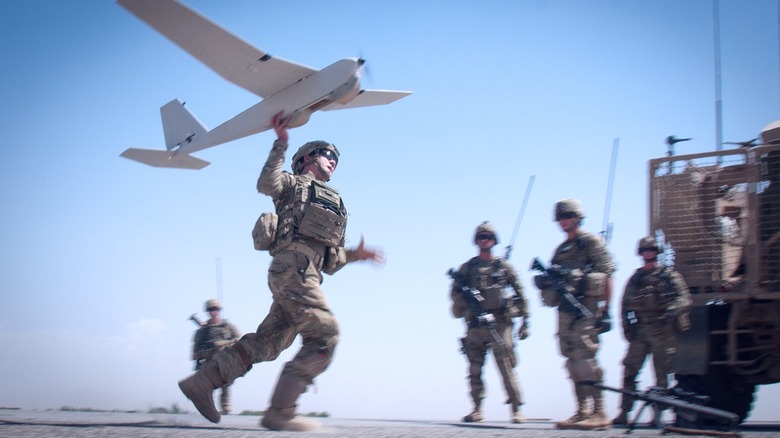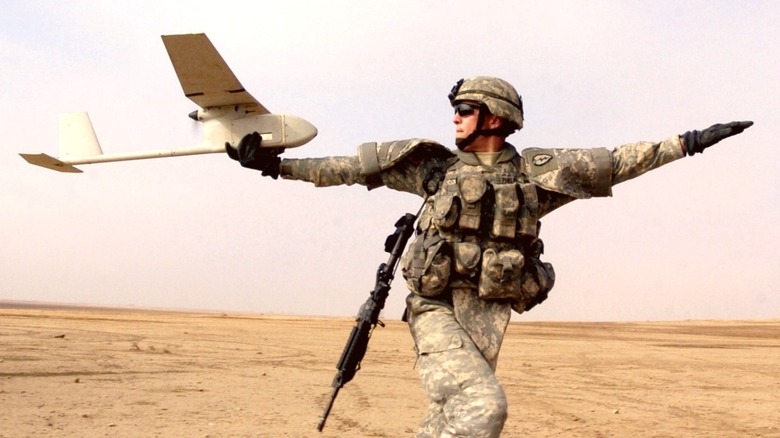The US Army Has A Looming Problem: Too Many Drones
There's no denying that the 21st century has proven the effectiveness of drones in modern warfare. The conflicts in Afghanistan and Iraq alone saw the use of drones for intelligence, surveillance, and reconnaissance (ISR), close air support, kinetic strike, hunter-killer missions, and a myriad of other uses. The Russo-Ukrainian War has similarly shown the effectiveness of drones being heavily used on both sides. Both nations have adopted unique means of taking enemy drones out of the fight, and their evolution continues.
The United States Army has long enjoyed the use of a variety of drones, from tasking the MQ-1 Predator or MQ-9 Reaper, to using hand-deployed RQ-11 Ravens. These are force multipliers that enhance a unit's ability to see its area of operation in ways that couldn't be achieved previously. An unforeseen problem has arisen that could endanger a soldier's ability to use drones effectively: there are too many of them, and their numbers continue to grow.
Recently, the U.S. Army began integrating drones at the company and battalion level, and more are coming. While drones are undoubtedly helpful, an overabundance of them creates a problem for ground operations. The new concern surrounding drone use in the U.S. Army is that they can be overwhelming to soldiers. One commander, according to Business Insider, voiced their concern that enabling a squad with drones isn't necessarily bad, but too many drones can also encumber a squad's operations, reducing their use as more responsibility falls onto squad leaders and troops already burdened with gear.
Soldiers on the ground have a lot of equipment to worry about
It's not something a civilian might consider, but as every ground combatant knows, they have to carry a lot of gear. Depending on the mission, they could be laden down with a rifle, 210 rounds of ammunition, a helmet and body armor, food, water, and more. The average ground combatant carries between 75 and 150+ pounds of gear, which takes a toll. Soldiers train with their gear, so they're more than capable of handling it, but adding anything upsets the balance.
Depending on the type of drone, it could introduce a lot more weight to a soldier's equipment. The drone itself doesn't often weigh much — for example, an RQ-11 weighs a little under five pounds. Unfortunately, that's not all that's needed to use one. There's also a ground control unit for managing the drone's flight and receiving video, which is delivered to a remote video terminal. There are also the cases needed to transport all of the equipment, much of which fits into a backpack, adding weight to a soldier's load.
The concern about adding more drones than are needed is that a squad leader would have to undertake more responsibilities while already managing a squad of personnel and gear. There's also a lack of trained soldiers, making drone operations problematic for some units. Moving drones out of the squad level and into platoons and higher would mitigate much of the concern. Still, as drone technology progresses, more and more options for small, single-use aircraft could further complicate a soldier's ability to carry out their mission.

